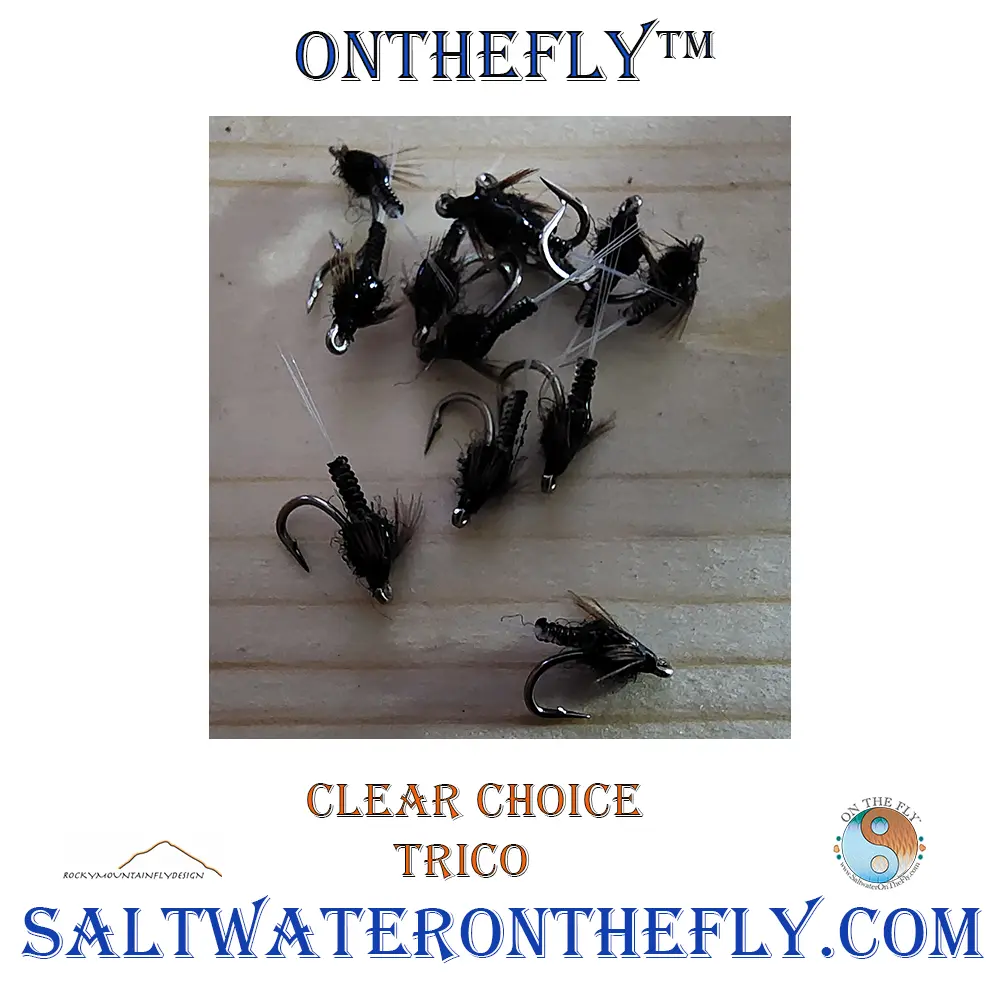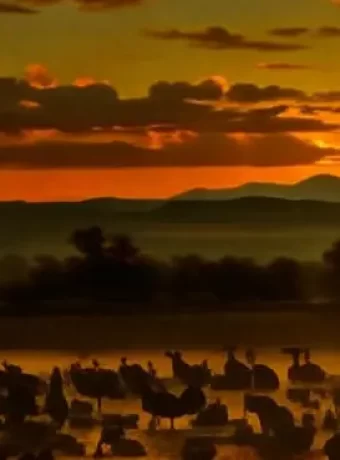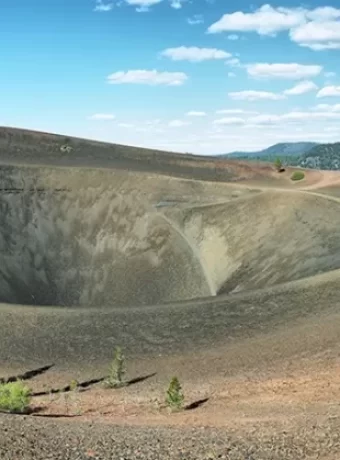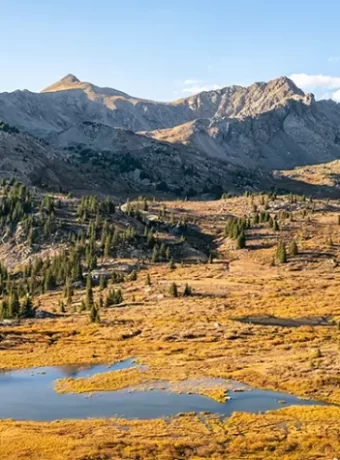Fly Fish South Platte River Colorado: Angler’s Guide
Get ready to dive into the serene world of fly fishing along Colorado’s famed South Platte River. This journey will lead you through pristine waters where trout flourish and landscapes that captivate. You’ll learn how to navigate river access points, match hatches with precision, and tap into local wisdom for a memorable Fly Fish South Platte River Colorado adventure.
From understanding the importance of river flows to exploring legendary stretches like Cheesman Canyon, this guide is your ticket to elevating your fishing experience. Discover techniques that work best in these Gold Medal waters while respecting conservation practices crucial for sustaining this natural treasure.
Tighten up your waders; we’re casting into one of Colorado’s most rewarding rivers!
Table Of Contents:
- The Geographic and Ecological Overview of the South Platte River
- Accessing the South Platte River for Fly Fishing Adventures
- Mastering Fly Fishing Techniques on Different Sections of the South Platte
- Understanding Regulations and Ethical Practices on the South Platte
- Exploring Target Species Along Various Stretches of the South Platte
- Seasonal Patterns and Gear Recommendations for Fly Fishers
- Additional Activities and Scenic Spots Near Key Fishing Areas
- Tips From Experienced Anglers For Maximizing Your Time On The Water
- Concluding Thoughts Reflecting On The Essence Of Fly Fishing In Colorado’s Renowned Waters
- FAQs in Relation to Fly Fish South Platte River Colorado
- Conclusion of Fly Fish South Platte River Colorado
- Explore Beyond the South Platte River in Colorado
The Geographic and Ecological Overview of the South Platte River
Carving its way through the rugged landscape, the South Platte River begins as a whisper in Colorado’s high country. It whispers of melting snowcaps and alpine springs, birthing three distinct arms that weave together nature’s narrative before joining forces to shape ecosystems and supply vital resources.
The High Country Origins and Forks of the South Platte
In these pristine beginnings, where pine-scented breezes meander through granite formations, you’ll find fly fishers casting for perfect trout along river sections known affectionately as Dream Stream or Cheesman Canyon. Here, brown trout thrive among boulders and pools shaped by centuries of flow; their presence tells us about river health far beyond mere statistics.
Away from Denver Metro Area’s hustle lies an angler’s paradise: The Middle Fork cuts serenely through Pike National Forest while Granite formations tower over it near Pine Junction. The North Fork offers anglers a more secluded experience at Wigwam Club – a testament to solitude found within reach of civilization.

South Platte River is a fly fishers paradise. Stay protected from the element is important to fly fishing success. We have you covered with the best outdoor apparel for fly fishing.
Fly Fishing Gear and Flies for Success on the South Platte River
Trout on the South Platte can be finicky or very selective. Presentation is the key. South Platte flows through Spinney and Eleven Mile reservoirs creating unique fisheries. I mainly us two fly rods 90% of the time depending on the action. For the lakes, cheesman canyon I use my Denny Rickards Signature Fly Rod. When I am dry fly or Euro-nymphing I really like the action of the Prestige 11′ 3 weight.
Flies very from chironomid patterns to streamers and my favorite save the day pattern a woolly bugger.
The Vital Role of the South Platte in Denver’s Water Supply
Moving downstream from its mountainous cradle toward Strontia Springs Dam, this ribbon ties urban life with wildness – a lifeline for cities like Denver. With each mile gained on its 439-mile journey towards confluence with mighty Mississippi waters comes increased responsibility: water extracted for coffee brewing or garden nurturing was once home to thriving aquatic communities around Scraggy View Park or Waterton Canyon.
Understanding our connection starts here—where Chatfield Reservoir stores what we need but also asks us not to forget those who call these flows home—a diverse array ranging from cutthroat denizens in higher elevations down to warm-water species mingling near Spinney Mountain during warmer months.
Current stream flows, monitored closely by both conservationists and recreational users alike tell stories that can’t be ignored – tales written across submerged rocks serving as canvases upon which hatches caddis dance their ephemeral waltz every year without fail.
With this ecological overview fresh in mind—the raw beauty melding seamlessly into utility—it becomes clear why every visitor must tread lightly on shores worth exploring time after time.
South Platte River Tips:
The South Platte River, with its origins in Colorado’s high country, is more than a fly fisher’s dream; it’s an ecological tapestry where thriving trout populations and granite peaks meet Denver’s vital water needs. As it journeys from alpine beginnings to urban lifeline, we’re reminded to cherish and protect these waters that support both nature and city life.
Accessing the South Platte River for Fly Fishing Adventures
The South Platte River beckons with its promise of gold medal waters and a plethora of trout, offering an angling paradise that’s just waiting to be explored. But where do you start? The key is knowing the river access points that unlock these prime fishing spots.
Navigating River Access Points for Optimal Fishing Spots
Finding your perfect spot along the 439-mile stretch of the South Platte can seem daunting at first glance. Yet, it’s as rewarding as landing a hefty brown trout on a size 22 dry fly. With year-round accessibility, there are gems like Cheesman Canyon and Eleven Mile Canyon which provide not only stunning granite formations but also some challenging and rewarding experiences for any fly fisherman.
To truly tap into what this river has to offer, one must understand how water flow affects both fish activity and accessible locations. Before heading out, make sure to check current stream flows through resources such as Trouts Fly Fishing – Stream Flows. This will let you plan around optimal conditions whether you’re aiming for waders-only areas or those requiring more advanced approaches.
As much about strategy as it is about skill, navigating these access points requires knowledge beyond just plotting coordinates on a map. It’s understanding that after spring runoff settles down in places like Waterton Canyon or Strontia Springs Dam area—where clearer waters give way—you’ll find opportunities abound with eager trout during warmer months hatches caddis making their presence known above surface levels inviting hungry swimmers below.
South Fork Secrets: Uncovering Less-Traveled Paths
If solitude is what you seek in your fishing Colorado journey—and let’s face it who doesn’t appreciate quiet moments by flowing waters—the less-trafficked paths of Pine Junction leading towards Scraggy View are worth exploring. These hidden stretches near Pike National Forest offer anglers space away from crowds while still providing chances at hooking into robust rainbow trout or native cutthroats quietly thriving within undisturbed habitats thanks partly due diligence respecting local regulations regarding private property boundaries when seeking these secret havens amidst nature’s grandeur.
Cheesman Reservoir Rewards: Tailwater Tactics
Beyond mere river banks lies potential adventure around every bend. This is especially true for tailwaters fed by Cheesman Reservoir—one region noted particularly among seasoned anglers targeting trophy-sized catches. The right approach and patience, along with tactics that employ specific South Platte River flies suited to the varied environments found here, are key. Think big nymphs and midges at certain times of the year versus smaller emergers used elsewhere during different seasons in the life cycle.
Get to know the South Platte’s access points for a top-notch fly fishing experience. From Cheesman Canyon to secluded spots near Pine Junction, there’s year-round action with diverse tactics needed for each unique area.
Dive into less crowded paths like Scraggy View or target trophy trout around Cheesman Reservoir—knowing where and how will make all the difference in your Colorado angling adventure.
Tricos and Midges are a must in the fly box when fly fishing the the South Platte River. Learn more Click Images.
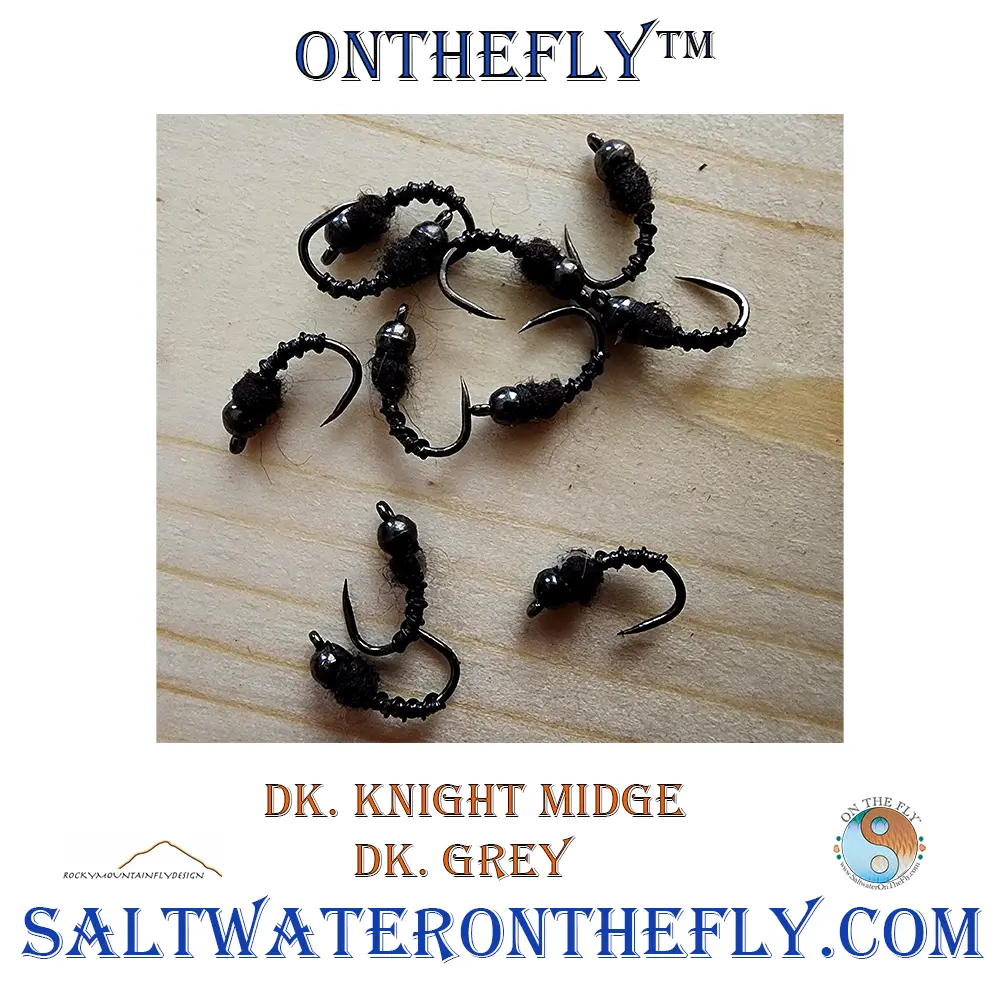
Mastering Fly Fishing Techniques on Different Sections of the South Platte
The South Platte River offers anglers a canvas as diverse as Colorado’s landscape. From meandering through granite formations to cutting deep into canyons, each section presents unique challenges and opportunities for fly fishing aficionados.
Fishing with Dry Flies in Clear Water Stretches
In stretches like the Middle Fork near Pine Junction, clarity is your friend but also your challenge. Here, trout can be finicky, making dry flies an excellent choice during hatches (caddis) when these insects are most active. To outsmart the river’s inhabitants that have seen every fly known to man requires precision and patience. A well-presented dry fly might just trick that wary brown trout into thinking it’s his lucky day—until he meets you.
Dry-fly fishing here isn’t just about casting; it’s about reading the current conditions and understanding how they influence where fish feed. Take advantage of slower pools or eddies behind boulders where trout often rest yet remain ready to pounce on unsuspecting prey floating by.
Navigating Riffles and Runs for Active Fish
When you hit areas with faster currents like those downstream from Strontia Springs Dam or Waterton Canyon, riffles become your playground. In these oxygen-rich waters conducive to abundant insect life including caddisflies—the main course during many hatches—you’ll want nymphs or emergers at hand for sub-surface action that will test both technique and tackle.
A tight line approach helps maintain contact with your flies as they navigate turbulent waters teeming with rainbow trout waiting for their next meal—a delicious-looking artificial enticed by its realistic drift through their domain.
Tailoring Tactics for Tailwaters Like Cheesman Canyon
Moving towards tailwater sections such as famed Cheesman Canyon demands adaptation due to regulated river flows resulting from dam release schedules accessible via Trout Fly Fishing stream flows page here. These stable environments create prime habitats not only for fish but also algae which sustains aquatic life year-round regardless of external temperatures making them gold medal worthy fisheries brimming with trophy-sized catches especially during warmer months when metabolism rates increase feeding activity levels significantly giving rise more frequent takes off any well-chosen Platte River flies pattern matching local hatch specifics accurately enough fool even most seasoned residents lurking below surface anticipating next wave edible offerings coming way thus increasing chances success manifold if played right cards strategically placed bets accordingly ever-changing game wits against nature itself ultimate rewarding experience awaits end taut line set hook firmly place.
This dynamic requires anglers to stay on their toes, ready to switch tactics in a heartbeat. So cast your line into these prolific waters and get ready; the thrill of reeling in that monster catch could be just one strategic fly change away.
Colorado Fly Fishing Tip:
Hit the South Platte’s clear waters with dry flies during hatches for finicky trout, but bring your A-game in precision. In riffles and runs, switch to nymphs or emergers to entice rainbows. And in tailwaters like Cheesman Canyon, match your flies to local hatches for trophy catches.
Understanding Regulations and Ethical Practices on the South Platte
Fly fishing the South Platte River isn’t just about tying the perfect fly or mastering your cast. It’s a dance with nature, one that demands respect for both the environment and local regulations. Here in Pike National Forest, every angler plays a vital role in preserving this aquatic treasure.
Fishing Regulations You Need to Know
Navigating fishing regulations is as essential as reading river flows for any successful outing. The majestic stretches of water are governed by rules designed to protect fish populations and their habitats. Whether you’re wading near Waterton Canyon or casting along Cheesman Canyon, make sure you’ve got your Colorado fishing license handy—because without it, you’re not just bending rules; you’re breaking them.
Keep an eye out for gold medal waters where catch-and-release practices are often mandated to ensure future generations can enjoy what we have today. Remember that bag limits vary depending on which stretch of river you visit—and always double-check if bait restrictions apply before dropping your line in those pristine waters.
The Etiquette of Fly Fishing: Do’s and Don’ts Alongside Private Property
Your right to roam comes with responsibilities when private property flanks these scenic banks—a common scenario across various sections like Scraggy View or Spinney Mountain Reservoir surrounds. Tread lightly here because while access may be granted through generous landowners’ good graces, nothing sours relationships faster than leaving gates open or littering granola bar wrappers amongst granite formations.
If signs say ‘keep out,’ do exactly that—there’s plenty more river waiting for respectful anglers downstream. But don’t worry about feeling boxed in; there’s ample public access too—places where anyone can step into cool currents seeking out brown trout hideaways beneath overhanging pines from Pine Junction down toward Strontia Springs Dam.
Tackling Shared Spaces: Maximizing Your Enjoyment While Minimizing Impact
A day spent fly fishing should leave only ripples behind—not footprints cutting through delicate ecosystems along shorelines frequented by fellow outdoor enthusiasts within striking distance of Denver Metro Area’s hustle and bustle. To really blend into this riparian world means adopting no-trace principles religiously throughout all 439 miles of its journey—from mountain headwaters down past bustling urban landscapes—all so crucial drinking water sources stay uncontaminated.
Before heading out, Pike National Forest is brimming with breathtaking spots worth exploring, but getting familiar with how fast (or slow) rivers flow will help keep everyone safe amidst changing conditions.
Definitely, we’ve got you covered. Let’s dive right in and tackle the issue head-on to ensure a seamless experience for everyone involved.
Fly fishing the South Platte means more than casting lines—it’s about honoring nature and following local rules. Keep your license ready, respect catch-and-release areas, and tread carefully near private lands. Leave no trace to protect our shared outdoor spaces for future anglers.
Exploring Target Species Along Various Stretches of the South Platte
The South Platte River, a ribbon of life threading through Colorado, is a sanctuary for fly fishers seeking variety and challenge. As your line unfurls across its currents, you’re not just casting into water; you’re engaging with an ecosystem vibrant with aquatic diversity.
Brown Trout: The Mainstay of Middle Forks and Tailwaters
In the storied stretches where granite formations stand sentinel over clear waters—like Cheesman Canyon or the Dream Stream—a particular quarry draws anglers from near and far. Here brown trout reign supreme. These wily inhabitants are often found lurking in deeper pools or hugging undercut banks waiting to ambush unwary prey like river flies. The strategic placement of nymphs can be key to enticing these crafty predators.
To heighten your chances at landing one of these bronze battlers, check out Trouts Fly Fishing stream flows before heading out; understanding river flow can mean the difference between a day spent admiring scenery alone and one punctuated by thrilling catches.
Rainbow Trout: Showstoppers in Gold Medal Waters
If there’s ever been a piscatorial performer that loves to leap into applause upon taking your fly—it’s got to be the rainbow trout. Spinney Mountain tailwater sections particularly shine as gold medal fishing areas where rainbows grow hefty on abundant feed. When it comes time for caddis hatches during warmer months, prepare for explosive action as rainbows voraciously surface-feed on emerging insects.
Cutthroat Trout & CutBow Hybrid: Icons of Upper Reaches
Amidst pines whispering tales along upper reaches such as Pine Junction lie pure strains or hybrids—the cutthroat trout and their kin known as CutBows (cutthroat/rainbow hybrids). With distinct jaw slashes resembling war paint, they offer more than mere beauty; they provide insight into healthy riparian habitats worth exploring further upriver towards Pike National Forest lands which cradle many rewarding experiences within its bounds.
Kokanee Salmon: Seasonal Spectacles Near Waterton Canyon
A kaleidoscope shift occurs when kokanee salmon enter our story each fall—turning parts near Strontia Springs Dam into theaters displaying crimson migrations from Chatfield Reservoir upstream to spawn their legacy forward—a testament both poignant and powerful about nature’s cycles playing out along this vital waterway feeding Denver Metro Area residents much-needed sustenance beyond simple hydration needs…
This journey alongside targeted species ends with a deeper understanding and appreciation for their unique roles in our ecosystem. By studying these creatures closely, we uncover the intricate balance of nature and the importance of conservation efforts to maintain it.
Hit the South Platte for a diverse fly fishing adventure, targeting everything from brown trout in Cheesman Canyon to rainbow trout in Spinney Mountain’s gold medal waters. Up your game by checking stream flows and timing hatches right, or go off the beaten path seeking cutthroats higher upriver. Remember, it’s not just about the catch; it’s also respecting and preserving these vibrant ecosystems.
Seasonal Patterns and Gear Recommendations for Fly Fishers
As temperatures rise in the warmer months, so do your chances of snagging that perfect trout with a well-placed dry fly.
Warmer Months: Prime Time for Dry Flies
When spring whispers its way into summer, hatches caddis start popping up along the South Platte like nature’s own fireworks show. This spectacle signals it’s time to switch gears from nymphing rigs to lighter setups favoring dry flies. But gear is just half the story; knowing when these insects hatch can give you an edge. For instance, early mornings or late afternoons are often best as they offer cooler temperatures and active feeding periods for hungry trout.
Dressing your line during this season means choosing between delicate presentations versus more robust offerings like terrestrials when afternoon winds kick up—a reminder that adaptability is key in your fishing arsenal. The right rod might be a 9-foot length rated around 5-weight—the quintessential all-rounder allowing precise casts without spooking surface sippers.
Fall Into Winter: Streamer Strategies and Layered Apparel
Come fall leading into winter, those shimmering surfaces where dry flies once danced become quieter as trout shift their focus to subsurface meals. Now streamers come out to play—imitating baitfish scurrying through deeper runs—and so should sink-tip lines designed to get them down into those trouts’ lanes quickly.
Apart from tweaking tackle, layer up. Colorado weather doesn’t kid around when seasons change; hence breathable waders paired with insulating layers keep you comfortable while waiting out elusive bites amidst shifting silver streams now running colder yet still clear enough thanks partly due Strontia Springs Dam managing upstream waters diligently year-round despite changing climes downstream where Denver relies heavily upon these flows too not just anglists alone seeking solitude within granite formations bordering watery bends below Spinney Mountain perhaps even before reaching Cheesman Canyon farther north beyond Pine Junction let alone Waterton Canyon near Chatfield Reservoir further east towards urban sprawl again proving versatility necessary whether discussing gear or garb alike both matter equally here indeed.
Spring Surprises: Nymphs New Beginnings
High City’s urban sprawl, the river is a dynamic force. Its capricious nature brings challenges and opportunities for both wildlife and residents alike. As temperatures rise, so does the anticipation of what this season will bring along its banks—blooming ecosystems eager for growth under the springtime sun.
Know the river’s rhythm and match your gear to it. Dry flies shine in warmer months, streamers dive deep when it gets cold, and always dress for success—whether that means delicate presentations or cozy layers.
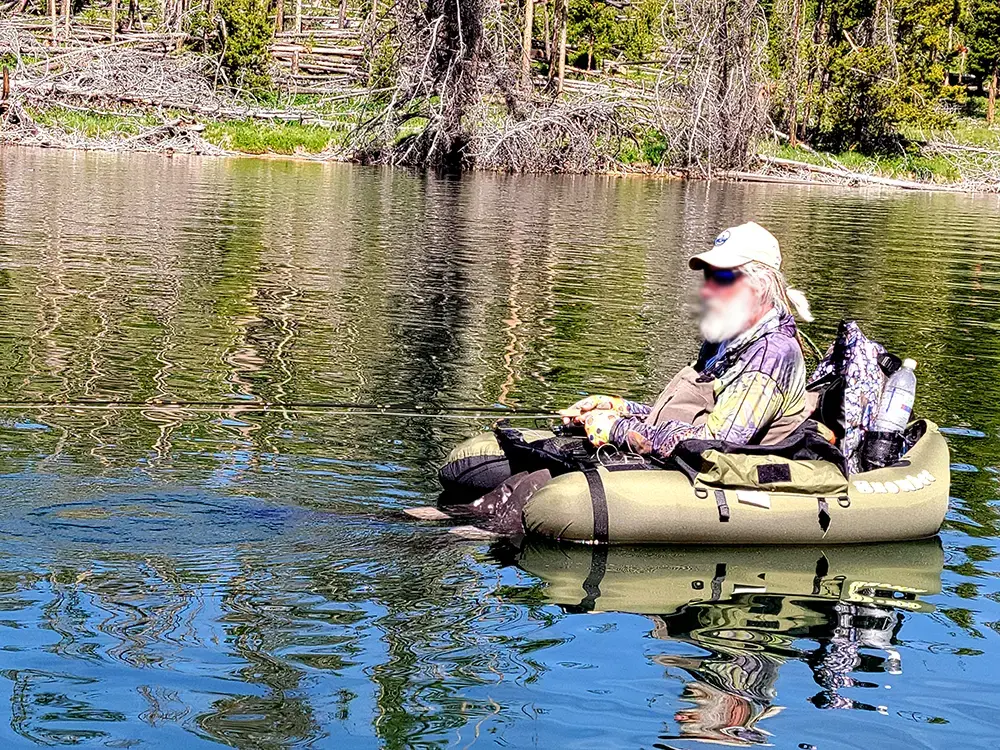
I fly fish still waters from my drift boat quite a bit. When is comes to a better presentation I prefer my float tube.
Additional Activities and Scenic Spots Near Key Fishing Areas
The South Platte River is more than a fly fisher’s paradise; it’s an invitation to explore Colorado’s raw beauty. As you wade through the currents, don’t miss out on experiencing the area beyond your reel.
Mile Canyon: Eleven Mile Reservoir’s Rugged Beauty
When not casting for trout, take time to absorb the grandeur of Eleven Mile Canyon. Here, granite formations stand as silent witnesses to time. A visit promises both tranquility and adventure—a place where eagles soar above and mule deer roam freely. For those who seek thrills off water too, hiking trails beckon explorers.
If fishing has been fruitful in warmer months thanks to prolific hatches caddis bringing life beneath the surface at Eleven Mile Reservoir just imagine what lies along these paths. But remember when adventuring in Pike National Forest or any natural space always respect private property rights and preserve our shared outdoor heritage.
Chatfield Reservoir: An Urban Escape with Wild Twists
Nestled near bustling Denver Metro Area Chatfield Reservoir offers anglers a reprieve from city life without straying far from home comforts. Beyond river flies tying up success on this gold medal stretch try swapping rods for paddles. Kayaking across still waters provides fresh perspective while grilling catches shoreside wraps perfect day nature within reach civilization. So before packing up after successful outing pause bask serenity found here alongside feisty finned residents.
A Day at Spinney Mountain: Fish then Picnic Amidst Majestic Views
Beyond pristine angling spots like Dream Stream section between Spinney Mountain Dam Strontia Springs revel picturesque picnic settings that allow full appreciation surrounding landscapes. Don’t be surprised if your lunch companion happens furry curious one local critters. They’re part cast characters make outdoors truly enchanting. Just sure pack everything brought avoid attracting unwanted attention wildlife keep their habitat clean safe future visitors alike.
Check current conditions here before planning trip ensure best experience possible every venture by river or reservoirs ensures memorable moments each return visit assuredly different last given ever-changing flow dynamic ecosystems present throughout entire region can guarantee two days same embrace unpredictable charm inherent wilderness pursuits appreciate subtle shifts season scenery alike.
In conclusion, the essence of fly fishing and the activities nearby remind us there’s so much to do and see once we step outside the boundaries of traditional sport. Whether it’s seeking solitude amidst a watery expanse, challenging yourself with a steep trail hike, or venturing on a kayak journey, memories await. Each new destination is a discovery in its own right, worthy of exploring time and again because sometimes the greatest treasures aren’t hooked at the end of our line but are all around us—waiting to be noticed and appreciated. With various access points available,
Dive into Colorado’s wild side while fly fishing the South Platte River. When you’re not angling, soak up Eleven Mile Canyon’s splendor, escape to Chatfield Reservoir for a kayak trip close to Denver, or enjoy a picnic with majestic views at Spinney Mountain.
Tips From Experienced Anglers For Maximizing Your Time On The Water
When you’re looking to beat the crowds and make every moment count on the South Platte River, there’s no substitute for insider knowledge. Seasoned anglers know that current conditions can turn a good day of fly fishing into an unforgettable one. With these pro tips, your line will hardly have time to dry.
Avoiding Crowds Along the South Platte
Fishing is not just about solitude; it’s about unbroken concentration and the peace that comes with it. To avoid rubbing elbows when casting your line in popular spots like Cheesman Canyon or Deckers, timing is everything. Consider hitting those gold medal waters during off-peak times such as early weekdays or at dawn before most have had their first cup of coffee.
But sometimes sharing river space is inevitable—so focus on reading water effectively instead of fretting over company. This means understanding where trout are likely to hold in different flows and structures so you can optimize each cast whether others are present or not.
Interpreting Current Conditions for Optimal Fishing
Catch rates can soar if you pay attention to what’s happening both above and below the surface. Keep an eye out for hatches caddis patterns indicate active feeding behavior—and adjust your tactics accordingly with matching flies from Trouts Fly Fishing Stream Flows collection which boasts a wide selection curated specifically for Colorado rivers like ours here along 439 miles of pure angling potential year-round.
Stream flows information, updated regularly by local experts gives insight into how recent weather events might influence fish activity levels so check them often as part preparation routine especially during warmer months when insect life peaks leading more aggressive takes surface level offerings such as dry flies making sight-fishing highly effective method targeting rising fish across various stretches this diverse habitat-rich environment we call home along mighty ‘Platte’.
Making Every Cast Count
Gone are days aimlessly tossing nymphs hoping luck would favor brave Today armed data precision skill set crafted through years spent knee-deep cold Rocky Mountain runoff best anglers approach stream much same way chess grandmaster views board carefully considering move anticipation adversary next play In our case elusive brown rainbow cutthroat trophy-sized tailwaters What does mean practical terms? Matching hatch critical course but also adapting presentation techniques suit changing currents depths particular section navigating These adjustments may include altering retrieve speeds lengths drift fine-tuning weight setup achieve perfect drag-free float All nuanced details matter pursuit perfect trout which inhabits these parts abundance thanks productive warm water species near Denver region overall worth exploring any avid fly fisherman seeking truly rewarding experience…
The key isn’t simply having the right tools; it’s knowing how to use them effectively. To excel, you need both.
Hit the South Platte River during off-peak times for peace and better fishing. Keep tabs on stream flows and hatch patterns to adjust your tactics, ensuring every cast counts towards landing that prized trout.
Concluding Thoughts Reflecting On The Essence Of Fly Fishing In Colorado’s Renowned Waters
Fly fishing in the South Platte River is like stepping into a living postcard where every cast weaves you deeper into Colorado’s natural tapestry. Anglers from near and far revere these waters, not just for their proximity to Denver but because they offer a trout fishing haven with unparalleled river access.
The Lure of Gold Medal Waters
What sets the South Platte apart as a gold medal fishing area? It’s more than the shimmering rainbow trout or the elusive brown trout that dart through its currents; it’s about embracing an experience rich with diversity. From granite formations rising along Cheesman Canyon to serene stretches near Pine Junction, this river flows beyond mere geography—it charts a course through anglers’ souls.
A day on the water here offers anglers opportunities as vast as Pike National Forest itself. Whether it’s feeling the tug of a cutthroat at Wigwam Club or watching caddis hatches dance over Spinney Mountain, there’s always something new to discover and respect within this vibrant ecosystem.
River Flows And Seasons: A Symphony For The Senses
In warmer months when dry flies reign supreme, Strontia Springs Dam releases transform sections of streambeds into perfect stages for fly-fishing performances. This isn’t just casting lines; it’s participating in nature’s own symphony where each rise resonates with promise—and maybe even that trophy catch.
Your rod becomes an extension of your intent as you read current conditions—a skill honed by visits during different seasons and under various flows provided generously by Trouts Fly Fishing Stream Flows. It serves both novices seeking rewarding experiences and seasoned veterans looking to challenge themselves against ever-changing elements.
Ethical Practices: Respect Above All Else
Navigating ethical practices while engaging in river fly activities involves understanding local regulations—a signpost guiding us toward sustainable enjoyment of these resources. Respecting private property boundaries ensures our continued welcome around key areas such as Scraggy View or Chatfield Reservoir, so future generations can write their stories upon these same waters.
Therein lies perhaps what truly defines why we return time after time—to engage respectfully with an environment that has much to teach us about patience, persistence, and ultimately ourselves amidst life beneath flowing riverscapes only found here in colorful Colorado.
Fly fishing the South Platte River isn’t just about landing trout; it’s a full-on Colorado adventure. From Cheesman Canyon’s grandeur to Spinney Mountain’s lively hatches, every season brings new experiences for both rookie and pro anglers. Remembering local rules ensures this natural masterpiece stays pristine for years to come.
FAQs in Relation to Fly Fish South Platte River Colorado
Where can I fly fish in South Platte River Colorado?
You’ll find top spots from Deckers to Waterton Canyon, with public access aplenty for a prime cast.
What type of fish are in the South Platte River?
The river’s bustling with trout – brown, rainbow and cutthroat make their home here. Cast away.
Are there trout in the Platte River?
Absolutely. The South Platte is teeming with various trout species eager for your flies.
Can you eat fish out of the Platte River?
Catch ’em if you can. But check local advisories on consumption due to potential contaminants.
Conclusion of Fly Fish South Platte River Colorado
Embarking on the journey to Fly Fish South Platte river Colorado, you’ve waded through a stream of knowledge. You now know the secret spots and access points that set you up for success.
You’re clued into matching your flies with local hatches – that’s essential. Remember how vital it is to keep an eye on those river flows; they can make or break your day.
Fishing techniques? You’ve got them tailored for every twist of this diverse waterway. Regulations are no puzzle anymore; respecting these rules keeps our sport alive.
The trout await across varied stretches, from wild brooks to trophy browns. Gear up accordingly and follow those seasonal cues!
Finally, take in more than just fishing: savor each scenic moment around Mile Canyon or Spinney Mountain Reservoir because sometimes, the catch is just a bonus in Colorado’s grand outdoors.
Explore Beyond the South Platte River in Colorado
Head off to Fortress Lake for Trophy Brook Trout, Italy or surf fly fish Denmark. Even Alaska and Montana are good choices.

